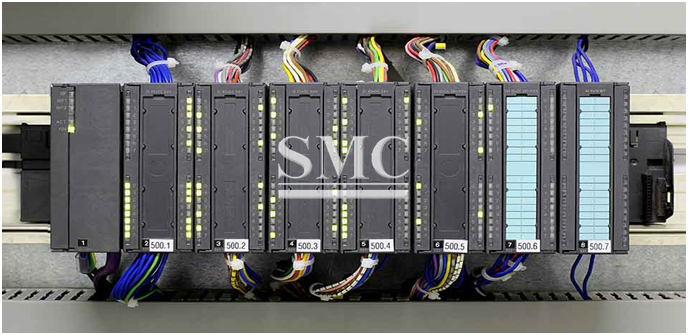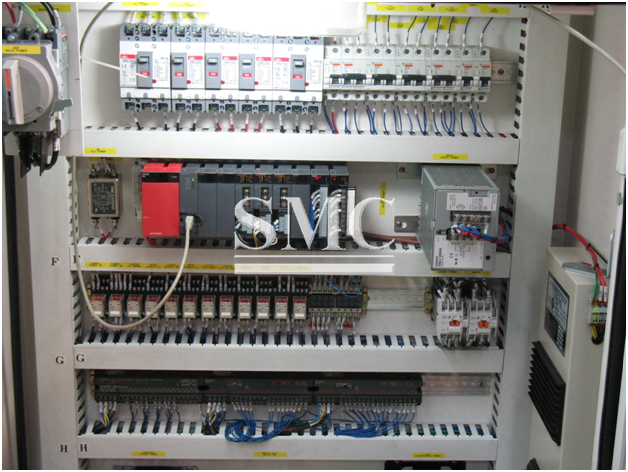Notice: Undefined index: sith_hide_share in /www/sites/alloy.wiki/index/wp-content/themes/likegoogle/single.php on line 32
Deprecated: get_settings is deprecated since version 2.1.0! Use get_option() instead. in /www/sites/alloy.wiki/index/wp-includes/functions.php on line 4862
Why improve?” Because your competitors are, and you will not be in competition with them very long, if you don’t. “More and better” are today’s bottom line. With the clients being better taught, and having better accessibility of the item they look for, you must choose between limited options.

So then the question arises, to what level of automation do we go? Also, when would it be a good idea for us to be there? It is anticipated that by the year 2000, innovation will twofold at regular intervals. So as to stay aware of the bewildering rate, you should have the establishment now. The establishment is PLCs and PCs in your plant.
Most of the automation advances will be in how we use these, and how they interact with the manufacturing process. Additions and changes to the programs they use will be of minimum cost, related to the large return in profits, your company will see.
Why PLCs?
Less cost to implement
For the expense of transfers and clocks to robotize around 3 lines for passing on item from completing machine to bundling machine, you could pay for a PLC to do likewise work. When all is said in done, a PLC framework would make generation more adaptable and responsive.
Reliability
Relays and Electro-mechanical timers (magnetic control), are susceptible to electrical / mechanical failure. With PLCs the control logic is non-mechanical, (solid state). And with the PLC, you can program extra logic to monitor and test itself for possible failure at no extra cost. This would make safety circuits safer, and reduce process variability. With PLC control you could expand similarity with existing gear, versatility, enhancing convenience, and giving a typical look and feel.
Speed
The PLC can speed up operation of machines that you could not obtain with that old out dated relay logic. Control logic makes decisions more accurate and faster than a human operator could hope to achieve. Timers can be set to hundredths of a second to compensate for external variables, and enhance safety.
Greater functionality
PLCs have the ability to compare real-time values and make decisions based on that comparison. They can do complex mathematical functions, and adjust the machine accordingly. The greater functionality allows you to design logic that can automatically adjust for different machine products, thereby reducing downtime for setups and machine change over.

Little or no cost to modify or upgrade system
Once you have the basic PLC system in place, most cost of adding circuits and machine control is minimum. For example, lets look at adding a vacuum control that would only come on at a certain time during the machine cycle. You would still need the photo eye to sense the dust, and a motor starter to turn on the vacuum, but the parts you would not have to buy would be: a valid dust sensed timer, a vacuum on timer, a vacuum fault timer, a fault lamp flash timer, or a vacuum on relay. You would probably need an extra cabinet to mount these timers and relays in. The cost without a PLC, would be over $ 1000, and 10 man hours. With a PLC, it would only take 30 minutes to add the logic to the program, and about 1.5 hours to wire and mount the motor starter and fault lamp. Since you would only have one relay to mount, you should not need another panel. So the total cost would be $ 200 and 2 man hours (80% savings). Of course if you were adding a larger project, the savings would climb exponentially.
Safety
In the past with transfer control rationale, security circuit execution was weighed out on a cost verses likely hood strategy. As it were, the fundamental crisis stop catch, depending on administrators to stop the machine before a mishap happened. Typically do to diversions and moderate response time of people, the catch wasn’t squeezed until after the harm was finished. With PLCs, you can cover 99% of all the conceivable danger, and the main expense is the time it takes to include a couple of rungs of rationale to your system.
Wellbeing window ornaments are about the most costly thing, however well under the expense of a mischance. Utilizing the PLC to screen dangers is comparable to having a full time representative viewing, however with snappier response time than any human.
The PLC logic should never be a substitute for hard wired safety circuits, just used as an enhancement to machine safety. Safety curtains should be ran in series with hard wired Emergency Stops. Always consult your safety equipment vendor and use a qualified Engineer when designing safety circuits.
Less downtime
Downtime can be broken down in to two separate areas. Scheduled and non scheduled. DuPont has been quoted as saying: “Maintenance is the single largest controllable cost opportunity, representing $100-$300 million per year corporate-wide.”
Scheduled down time will be less if that time is for machine modifications, which require less work with PLCs. Some of the preventive maintenance can be automated through the PLC to even further reduce down time.
Unscheduled downtime can be broken down (no pun intended), further into two groups
Troubleshooting and repair. The more complex our systems become, the more beneficial it is to write logic that will not only isolate failures but also indicate potential failures that may occur in the near future. This allows maintenance to change unscheduled downtime into scheduled down time. Scheduled down time, in turn reduces the amount of time down and loss of production.
The trouble shooting down time can be reduced by 90%. This is accomplished by utilizing the sensors already in place, to do testing through PLC logic to isolate where trouble is originating.
Repair is usually only a fraction of the time it takes to find the problem. It’s not uncommon to spend hours tracking down a limit switch that is bent, or a dirty proximity sensor. The cost to find the problem is more expensive than the cost to repair it. With PLCs the cost to find the problem is greatly reduced.
Implementing PLC technology in the ways mentioned above could result in a 43 percent or more reduction in installation costs, maintenance and variability. And we cannot put a price on human health and well being.
Shanghai Metal Corporation is a trusted aluminum alloy, aluminum foil price, stainless steel price and stainless steel manufacturer, kinds of stainless steel in china.
Guest contributors are welcome at the Alloy Wiki.It is a weekly wiki and guide on alloy information and processing technology, while also about the vast array of opportunities that are present in manufacturing. Our team of writers consists of a Machining Material Supplier / Machinist / Tool and Die Maker, a Biomedical Engineer / Product Development Engineer, a Job Development Coordinator / Adjunct Professor, and a President and CEO of a manufacturing facility.
Link to this article:What and why should you upgrade programmable logic controller?
Reprint Statement: If there are no special instructions, all articles on this site are original. Please indicate the source for reprinting:Alloy Wiki,thanks!^^


